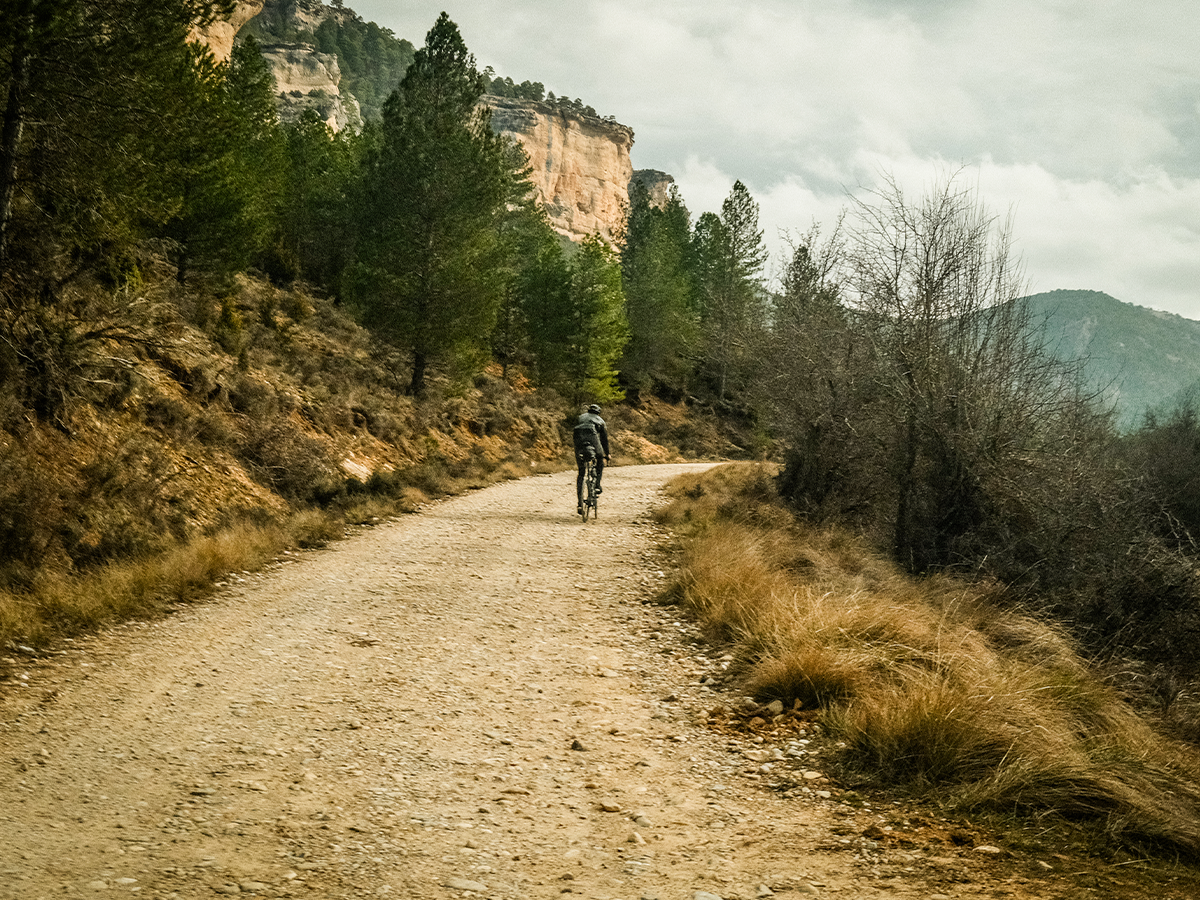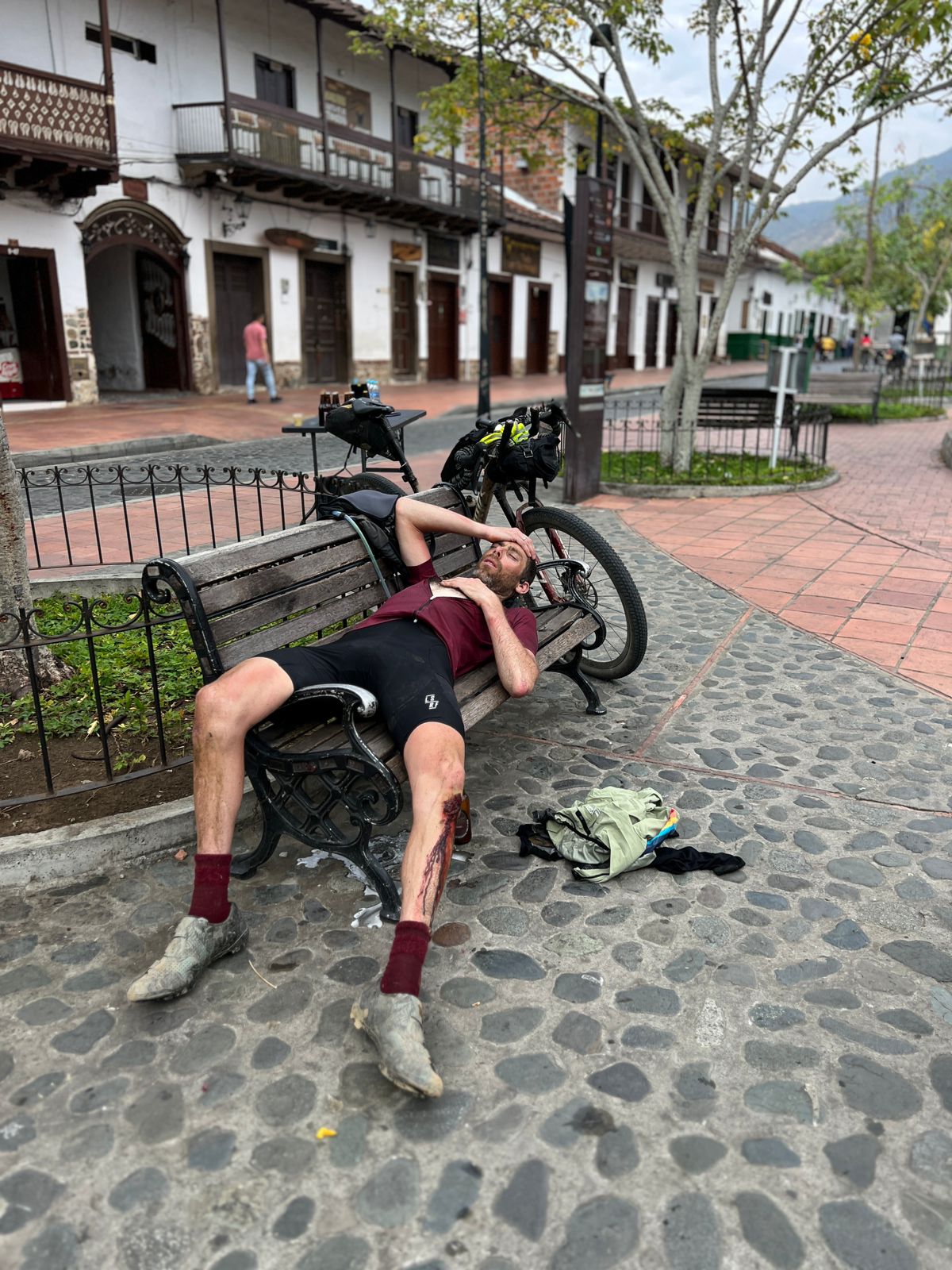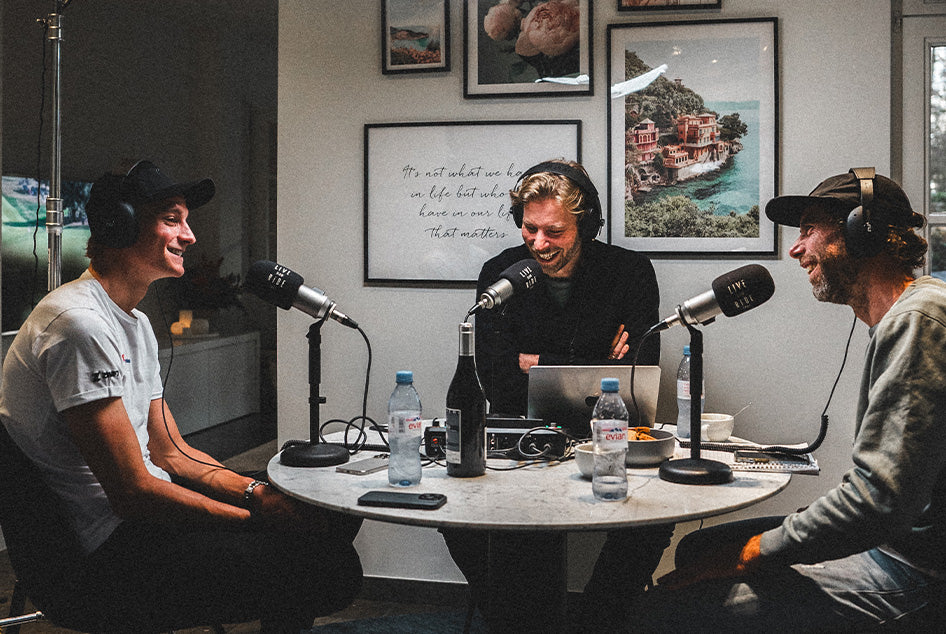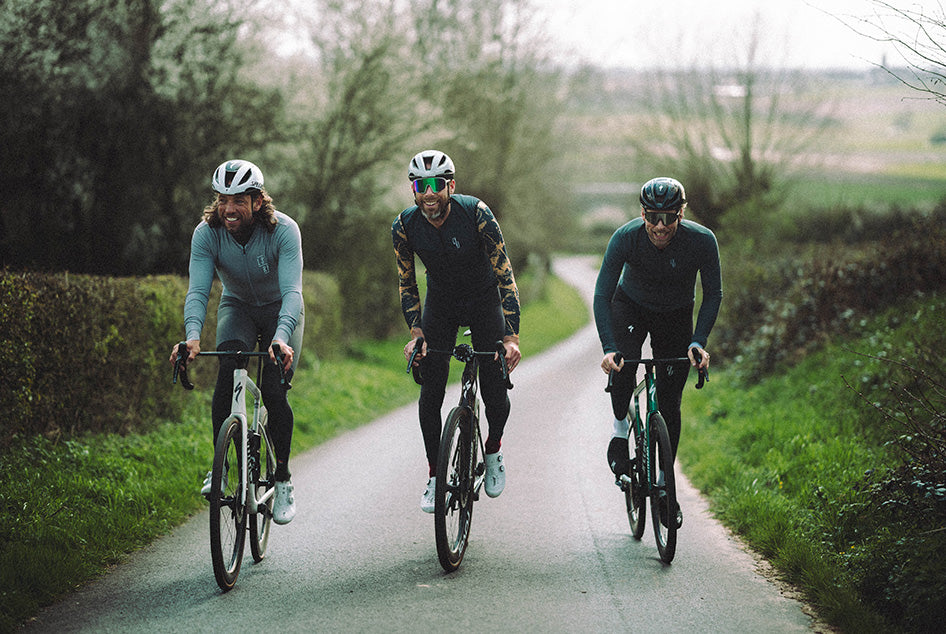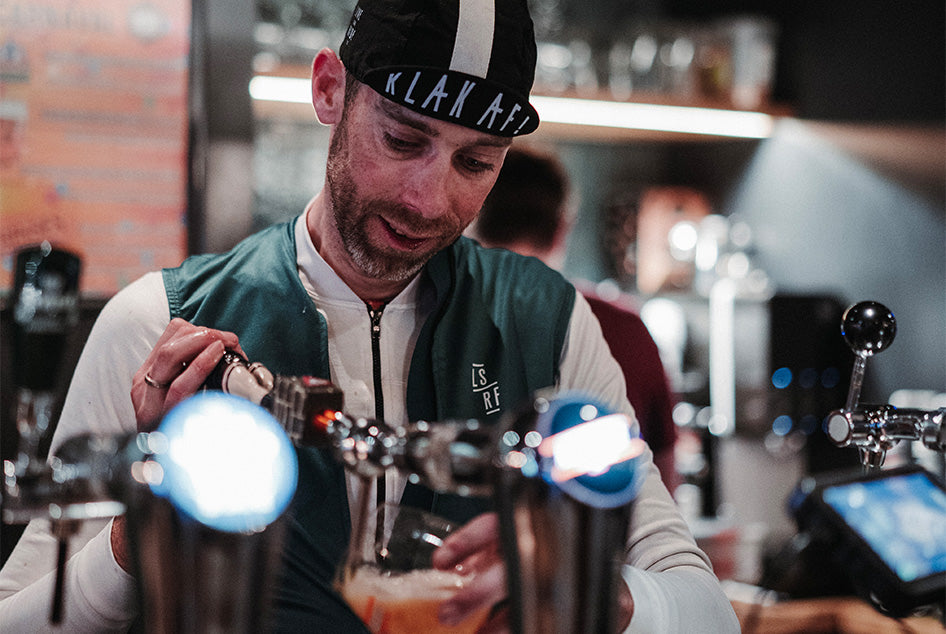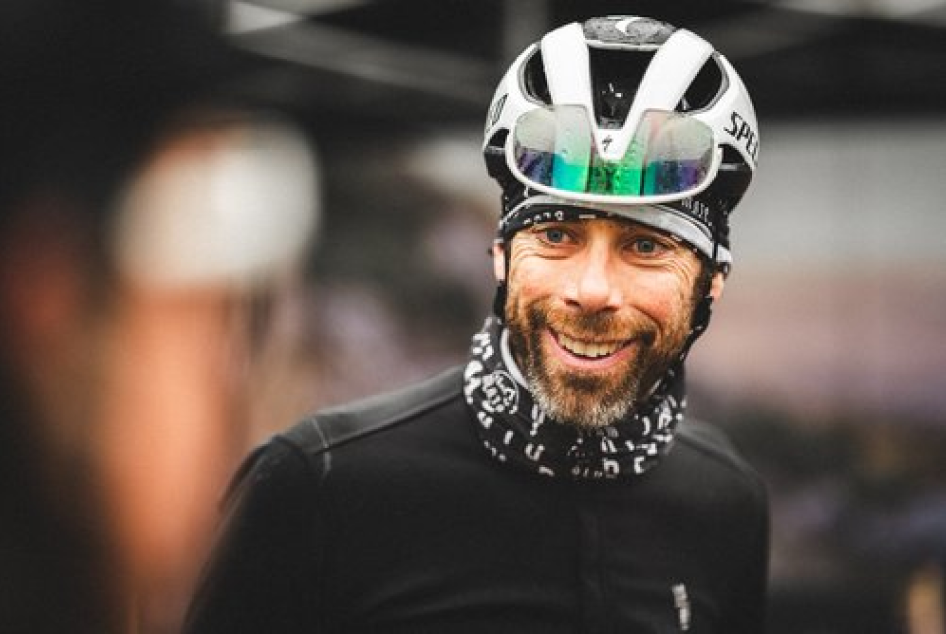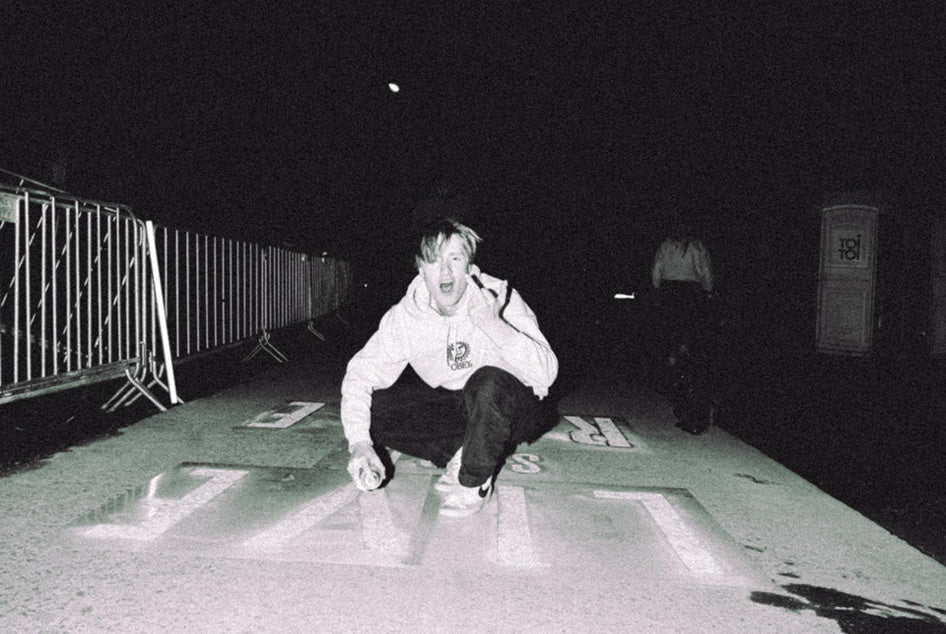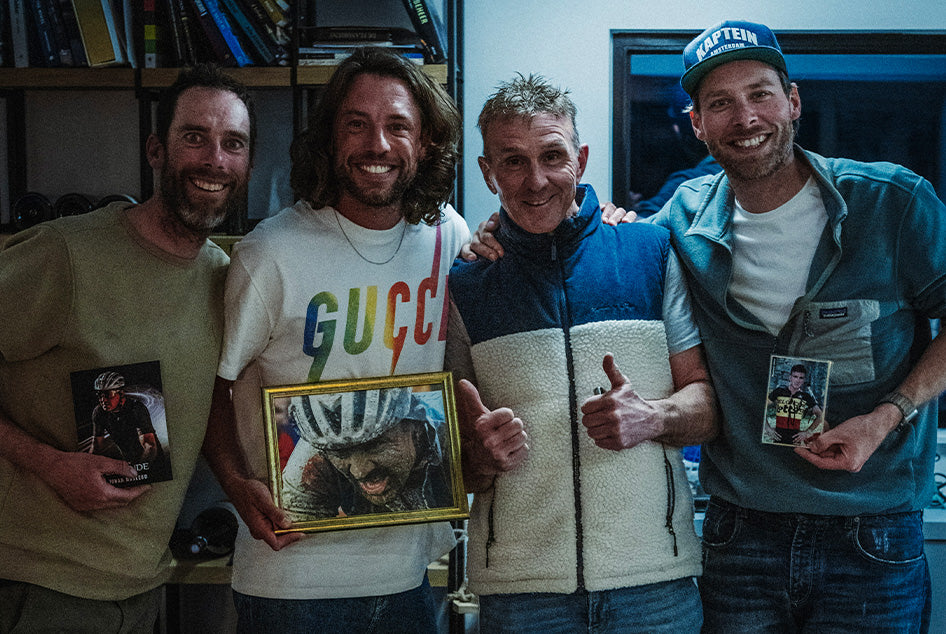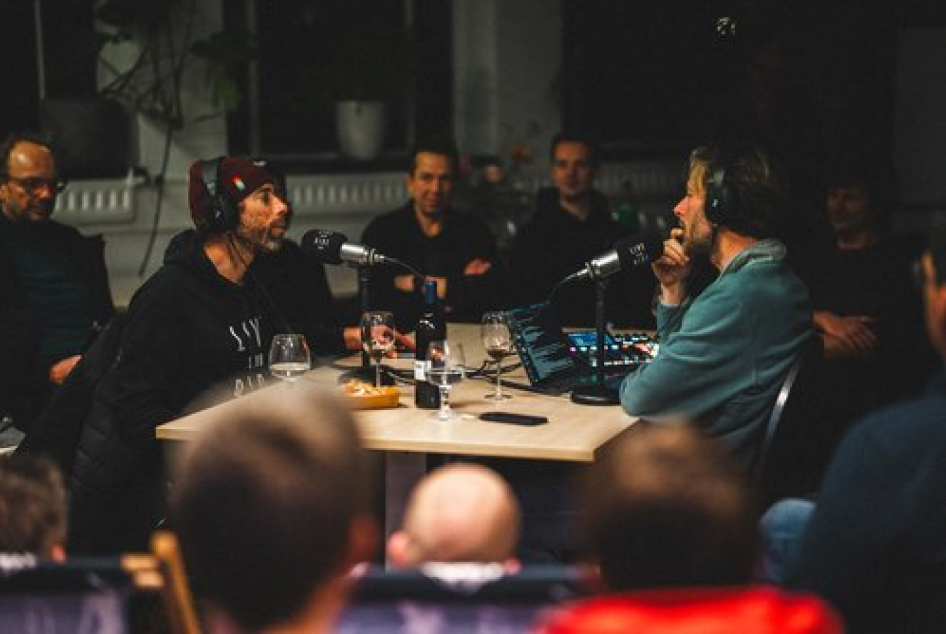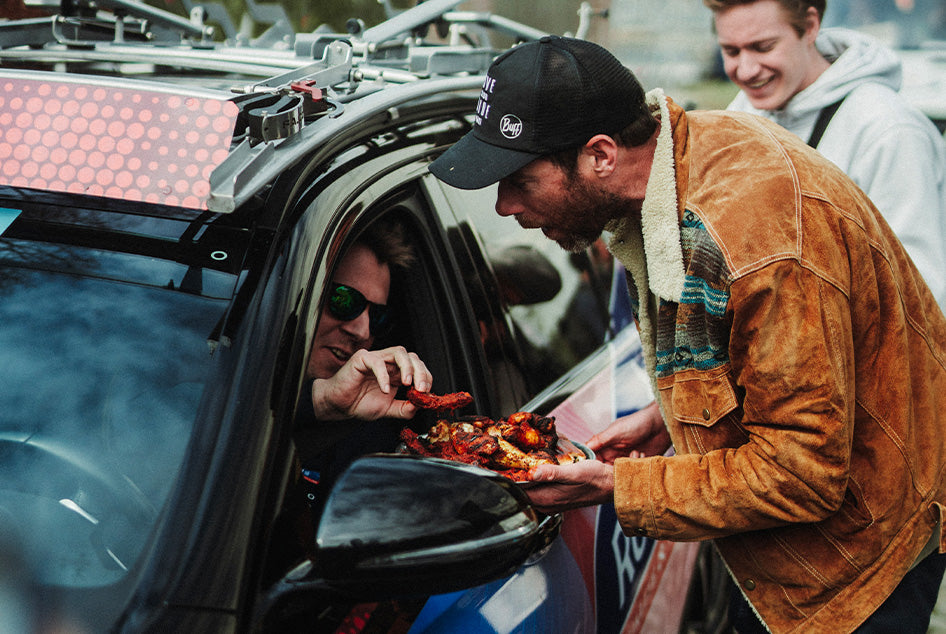‘‘ Un pequeño escape in the pampas del corazon’’
Why is it, we call a bike ride from A to B an adventure, and a bike ride from A back to A, well, a bike ride? The best ideas are often the most simple ones. Especially in the beginning. It’s only when the execution of the idea starts, the troubles begin. There are all kinds of practical reasons why some of the best ideas have never seen the light of day. Well, not this time. This idea didn’t need a particular reason either, except the hunger for freedom and adventure. It just came falling from the sky. The idea: let’s travel to a sunny place and ride our bikes. Three nights and four days. And to make things a little less predictable, we chose a few conditions for this trip: sun, tarmac (that funny compact gravel stuff) and a long, unknown route from A to B. A became Madrid. B became Valencia. The sun was playing hard to get. And somehow, the tarmac became gravel, every now and then.
This is our alternative style Ruta del Sol.
This is Roger, a buddy of mine. Roger is king when it comes to logistics (really helpful if you plan on going from A to B). Hence, the cell phone in his hand. He got us a courier ( expensive - don’t ask) to bring our bike bags from Madrid to Valencia. Right from the beating heart of Madrid - Estadio Santiago Bernabeu, we left for our first stage. We figured, why not get in the first 100 kilometers right away. It appeared that leaving the center of Madrid on a bike isn’t that easy and before we knew it, the hesitant spring sunlight faded into twilight and soon it became pitch dark. This sudden transition made us stop to make a quick phone call to the hotel: ‘’We are a poco mas tarde, is the kitchen still a-bier-to?’’
Day 2. Km 5 from 220. We have a big day ahead of us and what we referred to as Project Ruta del Sol is not living up to its name. It’s cold, it’s wet and it’s misty. A minor setback. Silently, we continue. Every now and then, we keep up the spirit with jokes like: ‘’What an amazing view, right?” We are just getting started, so we can still make fun of the situation. But seriously, what an empty landscape. We draw a comparison with the American Heartlands. And because we have been giving everything a Spanish like name, we call this area the ‘Pampas Corazon’.
Day 2. Km 70 of 220. We need food and drinks. And maybe even more important: warmth. We pass a lot of deserted villages and end up in Bar Los Cerillos - it has a fireplace. Even in the villages, it still feels like on the Pampas: no one there. No shops or bars and if there is one, it is closed. ‘’But surely these people have to eat as well?’’ I ask Roger, who is busy checking out Google Maps. His answer says it all: ‘’What people?’’
Day 2. Km 120 of 220. To spice things up a little bit, I secretly added a bit of gravel to our route. I thought it was a great idea, but in reality, it turned out to be a boobytrap for Roger. He has a flat and he is not amused. He doesn’t care for the beauty of the landscape, which, in my opinion, has changed for the better. A pale spring sun starts shining and the beautiful Laguna de Bezas presents herself to us. I never saw greener water in my life. Within 30 minutes we went from one world to another. When we get back to the tarmac road after an hour, a hipster like Spanish guy comes up to me and says: ‘’Next time, come with gravel bike, because you are now in Montañas Vacias.’’ Later that night in the hotel, I remember what the man said and google the name. A fantastic world opens before my eyes, which is also referred to as the Spanish Lapland. Next time I am bringing the Diverge.
As bikepacking Dutchmen we are totally dependent on Repsols and Pueblos in this region. Whenever we pass one, we go in and bulk on food and water. It’s like laying in your sleeping bag at night and having to get out to pee - just do it, don’t hesitate. The next Repsol could be another 50 kilometers away. And one more thing about the bars: How ‘cerrado’ they might look, there is always the secret word to use, which might open their kitchen. The one thing you can always order - bocadillo. Con queso is good. Con jamon even better. And con tomate y tortilla is just heaven.
This is the Torre Mudejar de El Salvador. The route crosses a pretty unknown, non-touristic area and we are eager to discover what the landscape will bring us in terms of vegetation, roads, mountains and towns. We pass so many picturesque and utterly Spanish towns, but there are two towns in particular that are jaw dropping; Teruel and Albarracin. You should indeed google it. In the center of Teruel we find a place to stay the night. It is in the countryside on a plateau at 915 meters altitude, at the crossing of the two rivers Alfambra and Guadalaviar, and known for its many Mudéjar structures. Again, you should google it.
On day three, the sun arrived. To enhance the sudden feeling of spring, the roads of Aragon were covered with blossom leaves. Everyone who has ever rode his or her bike for a few days in a row, knows you will always have to face some difficult parts. But also, you will have these great happy moments on your bike. This was one of them.
Valencia is at sea level. Teruel, the starting point of day three, is at a level of more than 900 meters. It goes without saying that day three was a good day. Sun, warmth, lots of towns with bars, blossom and many long, long roads, some up, but most down. Heavenly.
The Spanish are great at many things, but making candy isn’t one of them. You ask yourself: ‘’How hard can it be?’’ but even their Haribo style candy is awful. This is especially difficult when you have to ride a lot and have to fuel yourself with sugary stuff and water. Thank god for Oreo. Siempre mas Oreo, non?
Nothing beats riding into a vibrant big city after more than 500 kilometers of straight roads, nature and a lot of silence. And riding into Valencia is the cherry on the cake. We reach our destination with buzzing streets, laughter and a welcoming 21 degrees Celsius. This brings me back to my first question. Why should you go from A to B instead of going from A to A? Why the hassle of getting from Madrid to Valencia instead of an easy loop near the coast? The answer is simple. You leave something you will never go back to. At least, not on this trip. It feels like it’s all up to you, the good and the bad decisions. There is no going back, like leaving the house without your keys. And most importantly, you cover a much bigger area to play in. The fact that you have to continue, makes you see places you would probably never visit. The mountain you go down leaving the hotel, will not be needed to climb up again at the end of the day. It all adds up to that feeling of freedom and adventure, which were the main reasons to start this bike trip, and, let’s be honest, are the main reasons to start any cycling journey.
What is it about Colombia that makes you want to come back every year? Even when you know you are going to suffer even more? The immense Andes are beautiful but humbling, the steep climbs are impressive but killing and the heat, let’s not even start on that one. It is the race that demands it all, physically and mentally..
It has been fun riding Transcordilleras in Colombia and chasing each other on the tarmac of the Canary Islands, but let’s be honest. There is only one date in my agenda that has a red circle around it. Unbound | June 3rd It all leads up to this event. All the training hours, all the sacrifices, all the expectations. Okay, okay, cool down, live slow, you know. But seriously, for me personally, gravel season has now officially started and this is what will be on my mind the upcoming months.
TRAVEL AGENCY TEN DAM
It all starts with some serious laptop time and a close look at my agenda. Not only will I have to train every day, but I will also need some race days to get better. I simply need a few gravel events to get into the focus and shape. The Belgian Waffle Ride, Sea Otter Classic and Gravel Locos are the US races I definitely don’t want to miss. All the fast riders will be there and it’s always fun to hang out with them afterwards. But these travels can be a logistic pain in the ass. Booking flights for me and my team members, making sure baggage and bikes are counted for, hotels, rental cars and campervans that do one way trips; I am like a small travel agency for some days. Sometimes you arrive at city A, you have a big travel day of 500 km by car, you race somewhere else, you travel to the next event and you fly out from city B. I am very happy that my head is fully operational again after I had that brain contusion a year and a half ago, because otherwise this part of the ‘going to race gravel events’ would be a complete disaster.
BIKE SET-UP
Now that the flights are booked, I can worry about the set-up. I have to make sure I get all the desired material in time, to build up the desired frame for race day. I have to choose between tires and gears, depending on the specific course. Two different race courses on the same trip, demanding a completely different set-up? Ooff. New material from the sponsor that completely changes everything on your bike? Okay, let’s work on that. What will be the weather and will the course be muddy? Change of tires? And that’s ‘just’ the bike.
NUTRITION PLAN
In the last weeks before I leave for the US, I have to think about my nutrition plan for race day and training days leading up to the event. How many chews do I need, how many hydro tabs for my bottles and how many gels an hour? It may not sound like rocket science, but it actually is. My average intake on a 10 hour race like Unbound is much more than you would guess. I take 90 grams of carbohydrates every hour, which is a bit more than the average stomach can handle. So if you are new to racing, don’t take more than 75-80 grams an hour. During a race like Unbound, I take the carbohydrates in the form of powder in my bottle for the first two hours and the rest of the race, I change to chews. Halfway, I always have a back-up maple waffle, to calm the stomach and to remind me of home. In the last two hours, I add a bit of caffeine to the menu in the form of gels. And I must not forget to hydrate: at least every hour a bottle of water with a hydro tab, or I take it directly from my Camelbak.
PACKING DAY
Last but not least: pack my suitcase. How many times in my life have I stepped out of the house, asking myself: shoes? helmet? It must have been a million times. Next to the LSRF race jersey and a pair of photochromic sunnies, I have two essential items to take with me on the bike and therefore in my bag; my gps and power meter (AND THEIR CHARGERS). There is just no going without them. They tell me what I have done, where I am going, where I need to go and they provide me with all the necessary data to train hard and efficient. Together, they are like that best friend that tells you the honest truth. Maybe not what you want to hear, but what you need to hear. Accurate and trustworthy during rainstorms and other inconvenient weather and solid enough to cope with rough terrain, these computers are indispensable on rides and races. And did you know I use my gps as a timer to make sure I take the right nutrition on time?
Oh and a little but important note to myself: don’t forget to charge the DI2 in time. Those bastards never tell you they are almost empty. It happened to me several times in training already. Just in case, plug it. You don’t want to get stuck in one gear mid race..
On June 3rd 2023, Laurens rode UNBOUND GRAVEL, resulting in a 4th place overall. A mud section 11 miles in caused some drama, as well as a flat tire that needed three plugs. Ten hours of pushing yourself to the limit, summarized in ten sheets. All the data, all the info. If numbers are your thing, you will be thrilled. Thanks to Jim and JOIN for all the output.
Hi, meet Michelle de Graaf, a 25 year old bike enthusiast, living in Holland. She works for Live Slow Ride Fast and LSRF.cc and in her spare time she rides bikes. Gravel bikes, road bikes and fixies. On Saturday 23rd of September, she rode the SfiDARE Criterium in Yokohama, Japan. This mega fast, 20 minute short fixed gear crit was one of the many side events of the World Championships Bike Messenger, that were being held that weekend. She got there with her team members from Team Look Crit on Wednesday and the party was on from the moment they arrived. Pre- and afterparties, social rides, sprint races, skid competitions, qualification races and a big expo, all leading up to the big event on Sunday. This was not the only reason for her to book a flight to Japan, but a perfect excuse to top this experience off with a bike packing holiday.
FIXED GEAR RACING
Now first, let me tell you something about fixed gear racing. It is a unique style within the many bike disciplines available. There are no brakes on the bike and you have no gears. You choose one gear to put on your bike and stick to it. This means that the pedals always turn with the rear wheel, no matter the speed. Braking is being done by skidding, sliding your tires sideways to reduce speed. It is considered to be a sport for daredevils and fast, sprinter type of cyclists. The community of fixed gear lovers is big and has its origins in the bike messenger culture from the 80’s.
THE RACE
Back to Yokohama. The race itself was super short, fast and intensive and she did not know any of her Japanese competitors. Normally, she likes long straight parts where she can really speed things up. But here, there were more curves than she could comprehend and she needed to switch tactics in order to outsmart the rest. She decided to give it all from the start, hoping the rest would have trouble overtaking. Little did she know, the gap that she had created lasted and was even extended during the race. Feeling like a queen with all the cheering around her, she won and never felt more celebrated than that night.
The vibe was amazing. It was extremely busy and the ambiance reminded everybody of the Red Hook Crits of years back, with thousands of people watching the races in Brooklyn, Barcelona and London. Sadly, those series of events are no longer here, but the crowds at the SfiDARE Crit certainly brought back those memories and lit a fire that is still smoldering. The Japanese were, in contrary to what she had seen during the day, super loud and cheerful. One crazy party, that ended with a lot of beer and local spirits . She can’t wait to have more fixed gear crits like these brought back on the race calendar.
LIVE SLOW
What a start of her trip to Japan. Slightly hungover, she and her boyfriend packed their bike bags and traveled to Tokyo the next day. Biking the Shibuya crossing and getting all the sushi they could get our hands on. Off on the bullet train to Kyoto, for a bike trip to Nara and from there the couple really got into the ‘live slow’ mode. Into the mountains they rode, where the people were surprised to see two young persons on bikes, packed with just the essentials. They enjoyed the ‘onsen’, hot water springs deriving directly from the volcano and slept at ‘ryokans’, a sort of traditional family hostel, dating back to the 17th and 18th century. No bed, but a tatami with a blanket and a pillow and a common room where you can cook and wash. The craziness of the first weekend in the city seemed lightyears away. They traveled through the country for about a week to finish their trip at the bike festival Grinduro Japan in Hakuba.
BIKE PACKING
Bike packing in Japan may not be the first idea to cross your mind, but Michelle can definitely recommend it. Bike paths are rare outside the city, but the roads are safe and well maintained. Drivers keep their distance and are extremely polite, just like everybody, really. There are enough super markets, even in the countryside and they are just one big fun experience. Besides, there are vending machines everywhere along the major roads (estimated one for 23 people), so no need to be afraid to run out of fresh water of snacks. Help is never far and people go a long way to make sure you are in good hands. In conclusion, this was one of the most memorable trips she has ever experienced.
Hi, meet Erika van Tielen. She is an actress & hostess from Belgium and passionate about cycling and running. As a former presenter of the Belgian television show “Vlaanderen Vakantieland’, we know she is all about traveling. Whenever she gets the opportunity to pack her bags to go off and enjoy her bike, she’ll take it. This was also the case early October, when the regional tourist office of Costa Brava Spain offered her a trip to discover the (gravel!) cycling highlights of the northeastern coast of Spain.Four days of cycling fun, with two road stages and two gravel stages. She got off the plane in Barcelona and spent three nights at different hotels, starting at a hotel near Tossa de Mar. The first road stage followed the coast with amazing views around every corner. It is really what this region is famous for. Clifs, beaches and the big blue sea guiding you. The second, longer road stage added some uphill climbing from the coastal highlights to the Banyoles lake, north of Girona. Beautiful, smooth roads, easy traffic and as a cyclist, she felt perfectly safe. With the second hotel being in the city of Girona, they finished in the epicenter of cycling. Time to enjoy a nice apéro and tapas!
After the tarmac stages, it was time for her first gravel experience. She rode the Via Verde, a 100 kilometer easy gravel road from Olot in the Vulcanic area of Garrotxa traveling to the coastal town of Sant Feliu de Guixols. An amazing route passing old small towns, green forests and vast cornfields.
The next day, after having spent the night in Sant Feliu, it was time for the final stage, that really took her out of her comfort zone. It was a heavy route, pushing her to her limits on both the up and downhill sections. Near the medieval city of Pals, a village constructed around a fort on top of a hill, the route turned back towards Palafrugell.
It was a great experience - she conquered some of her descent fears and regained confidence during the stage. What a way to perfection your riding skills and to discover that loose rocks, single-tracks and sand don’t mean the end of your ride. Honestly, she did have to get used to this heavy gravel bike with large tires and was sometimes frustrated that it never felt ‘easy’, having to push all the time. Welcome to the gravel world, Erika ;)
The cycling community in this part of Spain is amazing. No wonder there are so many professional cyclists and formers pros living in this area. The whole region breaths cycling. Nice bars and coffeeshops are everywhere and you can find great bike shops in, for instance, Girona and Pallafrugell. The locals here speak English surprisingly well, so even if your Spanish is somewhat rusty, you can find help. Erika had the privilege of having two lovely guides, 61-year-old Joseph and Toni, a former pistier, both passionate about cycling. Although the whole modern gravel hype had not affected these old roadies, they were keen on waving them off and joining the couple on the last kilometers of their gravel ride.
Erika can’t wait to return to Girona and the Costa Brava, because there are still so many roads to discover. Wether you are up for an easy and smooth road ride of for a gravel extravaganza, you can find hundreds of roads to choose from. Hilly of basically flat, steep or steady climbing, on or off-road. And…did we mention the year-round pretty weather?



